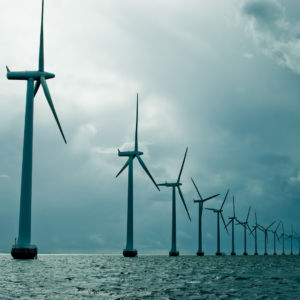Well, Nantucket did its best, but the 2024 remake of “Jaws” doesn’t have the same pizazz. Like Steven Spielberg’s fictitious Amity Island, beaches are closed, and summer tourism is in the tank. The contentious town halls probably had guys in bad sports coats, a la Amity Mayor Vaughn.
This time, the monster besieging the island isn’t a gigantic, man-eating “miracle of evolution.” It’s more prosaic and predictable: bureaucratic arrogance serving an ideology. Huge and scary in its own way, Vineyard Wind, 15 miles south of Nantucket, doesn’t have the same shock value as a shark. In fact, it has no shock value: it hasn’t generated a watt of electricity in more than a month.
Vineyard Wind, touted as the first utility-scale offshore wind project, is part of the administration’s push to sideline fossil fuels and make the U.S. more dependent on solar and wind. The administration bet huge (with taxpayer money) on offshore wind. It hasn’t gone well.
When a Vineyard Wind turbine blade broke off in mid-July, sending masses of debris to Nantucket’s beaches, it was a visible sign of trouble in green energy paradise. Private developers have pulled out of two projects off the New Jersey coast before they started. Off Rhode Island, federal agencies overseeing the South Fork wind project alienated and angered municipalities, Indian tribes, tourism boards, historical associations, commercial fishermen and more. A detailed letter to the Bureau of Ocean Energy Management from the groups’ lawyers said, “We have NEVER seen a more dysfunctional process than the one BOEM has imposed. … At every juncture, BOEM has failed to listen to or consider the concerns of historic communities and Tribal Nations.”
The administration was in too big of a hurry to remake the energy sector to consult with those who’ll live with its legacy. The at-all-costs haste is evident in internal BOEM documents. Companies that lease federal drilling sites (oil or gas wells, etc.) must buy bonds or produce financial assurance showing they can safely shut down sites and not leave taxpayers on the hook for cleanup. Vineyard should have had to do the same.
However, BOEM has found financial assurance a useful political tool. BOEM made the rules more onerous for small oil and gas companies in the Gulf of Mexico. The needless change may drive hundreds of small firms (thousands of employees) out of business. That’s a “stick” of the administration’s green energy plan.
Vineyard got the corresponding carrot. It asked for a waiver. BOEM obliged, reasoning that Vineyard Wind’s “proven technology” and “guaranteed electric sales prices” would protect taxpayers.
Well, to sell electricity, you must make electricity. Vineyard Wind hasn’t been operational in a month. Meanwhile, the busted blade has continued to disintegrate. Here are a few facts culled from an August 11 Nantucket Current article:
“Vineyard Wind and GE Vernova, the manufacturer of the turbine, announced a formal plan late Friday to remove the damaged blade from the turbine. … Early this morning, portions of the remaining hanging sections of the Vineyard Wind turbine blade detached from the hub,” the town of Nantucket announced in a statement released Sunday evening. … The project remains shut down by the federal Bureau of Safety and Environmental Enforcement, which is conducting a “comprehensive and independent investigation.” … Developed in consultation with federal agencies, the action plan is the result of “thousands of hours” of development, review and testing, according to Vineyard Wind, to ensure the safe removal of the damaged blade.”
It takes “thousands of hours” of planning and the mobilization of federal agencies to replace a single turbine blade. Whatever the future of renewable energy, if market forces — instead of government mandates — could function, Vineyard Wind may have set it back. More of this “proven technology,” we’re gonna need a bigger boat.





